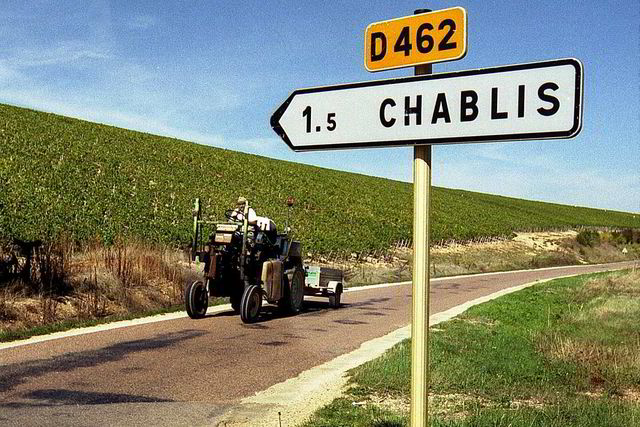If you’ve ever stood in front of a wine shelf debating between Chablis vs Sancerre, you’re not alone. Both are French, both are white, and both are known for their fresh, elegant style. However, once you dig a little deeper, you will discover that these two wines could not be more different. From grape variety to geography, and from flavour profile to food pairings, there’s a world of difference between them. If you are someone who enjoys crisp, mineral-driven white wines, then understanding the contrast between Chablis and Sancerre will help you choose more confidently and drink more deliciously.
Grape Variety: Chardonnay vs Sauvignon Blanc
Let’s start with the grape: Chablis is made entirely from Chardonnay, while Sancerre is all about Sauvignon Blanc, and this single fact sets the tone for the entire tasting experience. Chablis shows purity and restraint, there is no tropical fruit or creamy oak here. Instead, you’ll find crisp citrus, flint, green apple, and a beautiful mineral tension that comes from the region’s limestone soils. Sancerre, by contrast, is more aromatic and expressive. It bursts with lime zest, green herbs, gooseberry, and a touch of salinity. Both wines are bone dry, but their personalities are shaped by the grape variety at their core.
Click here to explore the range.
Regional Size and Structure: Chablis vs Sancerre
Chablis
Chablis is located in the far north of Burgundy, almost closer to Champagne than to the rest of Burgundy itself. It is a relatively small region, producing about 30 to 35 million bottles a year. That is tiny compared to other white wine powerhouses. Within Chablis, there is a very clear quality hierarchy. At the entry level, you have Petit Chablis, followed by Chablis, then Premier Cru, and finally Grand Cru at the top. About 66 percent of production is standard Chablis, with 16 percent Premier Cru and just two percent classified as Grand Cru. The Grand Cru vineyards are all located on one hillside facing south-west, which helps maximise ripeness in this cool climate. These classification levels directly affect flavour intensity, ageability, and price.
Sancerre
Sancerre is in the eastern part of the Loire Valley and is significantly smaller, both in terms of vineyard area and output. It produces under 25 million bottles annually, with a broader mix of growers and co-operatives. Unlike Chablis, Sancerre does not have a formal cru system. That said, producers often refer to key villages and soil types, with silex (flint), caillottes (pebbly limestone), and terres blanches (clay-limestone) being the three dominant terroirs that influence flavour and structure.
Weather and Vintage Variation
Both Chablis and Sancerre are cool-climate regions, but Chablis is particularly vulnerable to frost, which can decimate crops and create real vintage variation. It is not unusual to see lower yields and higher prices in challenging years, especially for Premier and Grand Cru wines. Sancerre tends to be slightly more protected and consistent year to year, but the impact of warmer summers is beginning to show in both regions. In recent years, Chablis has experienced riper vintages with slightly rounder texture. Sancerre has seen a move away from its once piercing acidity toward more layered, fuller-bodied expressions. Still, both wines remain fresh, linear, and beautifully food friendly.
Food pairings Ideas
Chablis
-
Chalky minerality and citrus backbone make it perfect with oysters, shellfish and light fish dishes
-
Premier Cru and Grand Cru Chablis can handle richer foods such as:
-
Dover sole
-
Scallops in butter
-
Roast chicken with herbs
-
Sancerre
-
Aromatic lift and bright acidity pair naturally with:
-
Goat’s cheese
-
Asparagus
-
Grilled vegetables
-
Fresh salads
-
-
Also delicious with:
-
Sushi
-
Thai dishes
-
Any dish with zesty citrus or herbal notes
-
Which One Should You Choose?
If you’re in the mood for elegance, structure, and quiet confidence, go for Chablis. It’s Chardonnay in its purest form and one of the most precise expressions of terroir you’ll find. If you want freshness, vibrancy, and a wine that jumps out of the glass, Sancerre is the perfect Sauvignon Blanc to reach for. Both have their place and their charm, and if you love one, there’s a good chance you’ll appreciate the other, just for different reasons.
Whether you’re planning a seafood feast or just want to explore two of France’s most iconic white wine regions, our Chablis vs Sancerre collection lets you taste the difference side by side.






0 comments